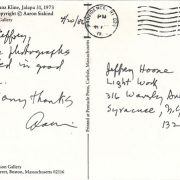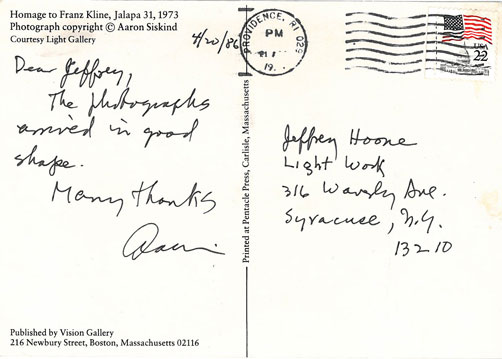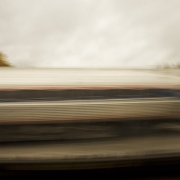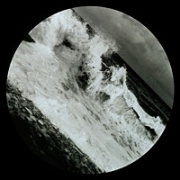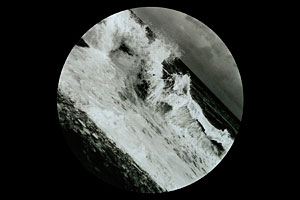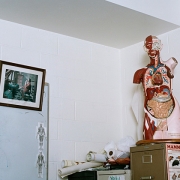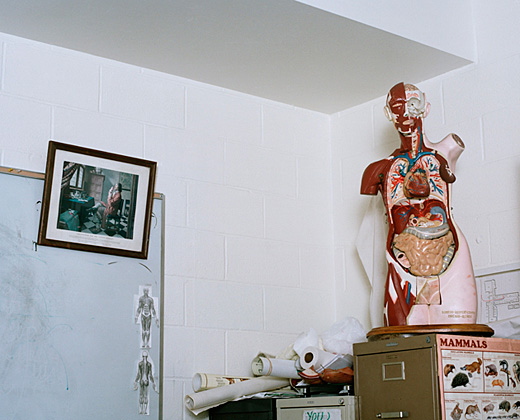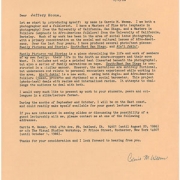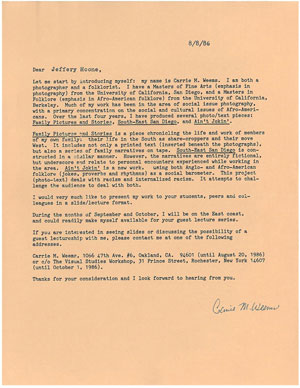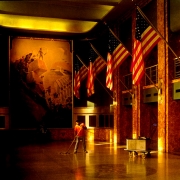Yolanda del Amo talks about Archipelago
Throughout the month of January, Flak Photo has featured photographs in it WEEKEND series by Yolanda del Amo from her ongoing series Archipelago. Yolanda makes images that eloquently depict moments in human relationships when people, although in the presence of another or others, exist in their own interior worlds. At these times, Yolanda’s subjects seem to inhabit an in-between space, free of words but full with the possibility of emotional tensions and dramas. Archipelago highlights these important times when the real work of keeping relationships together or driving them apart takes place. I recently had an opportunity to talk with Yolanda over email about her images, her residency at Light Work, and other events that have driven the series.
Mary Goodwin: Archipelago shows us a common and universal characteristic of our relationships that often goes unnoticed. I can imagine an ah-ha experience when you first became aware of the power inherent in these moments. How did you start making these photographs?
Yolanda del Amo: Archipelago grew out of a body of work called Domestica, which explored the relationship between a maid and her lady. I was interested in the power distribution between these two women (better say these two roles), and how the spaces they occupied reflected their personal territories. But after a while I felt the limitations of dealing just with two characters and I decided to open up the work to other people, which felt wonderful as it offered endless possibilities. The power of these moments has always fascinated me—its complexity, beauty, and sometimes awkwardness—but the ah-ha revelation for me was more about how photography as a medium could capture them effectively.
MG: I recently returned from photo LA where your image Edith, Juan was hanging in the Light Work booth. After enjoying the image and perusing the work available in Contact Sheet 159, several people referenced the work of Edward Hopper in connection with Archipelago. Has Hopper entered into your thinking about the series? What artists have influenced you in your work?
YDA: Yes, Hopper is definitely an important visual reference for me, and I have been influenced by his representation of spaces —impeccably clean, almost stark—his use of light, and the psychology of his characters who are intriguely immersed in their own worlds. Another painter who has influenced me is David Hockney, in particular his series of double portraits. But probably the most important influence for me has been the work of the German choreographer Pina Bausch for her focus on human relationships and their complexities. While I lived in Cologne during my college years, I was lucky to see many of her dance theater pieces in Wuppertal, where her company is based.
MG: Many people don’t realize that you came to photography after completing advanced studies in Mathematics and a whole career in business. How did photography come to have such a prominent place in your life?
YDA: I was working in 1999 at a German insurance corporation as a mathematician, and the company had relocated me to Argentina. It was in Buenos Aires where I took my first photography classes, and I knew from the very beginning that I had found something meaningful. I had no choice but to follow my drive! I moved to the United States, completed an MFA at Rhode Island School of Design and have been making work and teaching since then. Looking back, I am myself surprised of my sense of determination because I had no idea what I was getting into, but I am very glad I switched my focus and my career because, despite the struggle of being an artist, I am much happier now.
MG: You were a Light Work Artist-in-Residence in 2009. How did you hear about the residency program, and how did your time at Light Work and subsequent exhibition and Contact Sheet 159 help shape the trajectory for Archipelago?
YDA: I had only heard good things about Light Work from friends and colleagues in the field and was very excited to be accepted into the residency program. It was one of the most productive months in my life! You and the rest of the staff are incredibly supportive, and being all artists, you can relate on a very different level to the work and the process. I was doubly honored when I was offered a show at the main gallery, and the breadth of exposure that the publication of Contact Sheet has offered to Archipelago is invaluable.
MG: How have the images in Archipelago evolved over the years as you’ve made them in terms of your approach as a director of the subjects and in the choice of the settings?
YDA: During the first years of Archipelago I shot almost exclusively indoors because I needed some structure to frame the images. In the last years I have incorporated outdoor shots, which has been challenging but also liberating. I have also switched from 4 x 5 to 5 x 7 negatives, a more rectangular format that has opened up new possibilities of how the sitters relate to the space their share. The longer I have been shooting, the more I enjoy the collaborative aspect of the work. All the sitters I work with are people I know, and although I am indeed the director of subjects and locations, I listen and watch very carefully to what they bring to the scene. I really love the magic mix between control and unpredictability in the process.
MG: And meanwhile, you continue to create new images for the series. What are your upcoming plans for the series in terms of shooting, exhibition, and publication?
YDA: I have some ideas for shooting this year, and currently I am applying for funding as they involve some traveling. A solo exhibition of my work will open next week at the Pascal Gallery at Ramapo College. Ultimately, my goal is to publish Archipelago as a book, and I hope that all the support and exposure that I have received from Light Work will help me achieve that goal.
MG: Thank you very much for the conversation about your work, Yolanda!
Images: Aron, Helen, Laura, 2008; Edith, Juan, 2007; Anabel, Paula, Clara, 2008





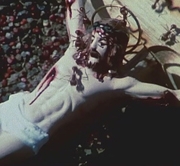
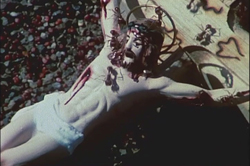 Light Work, along with Syracuse University’s
Light Work, along with Syracuse University’s 